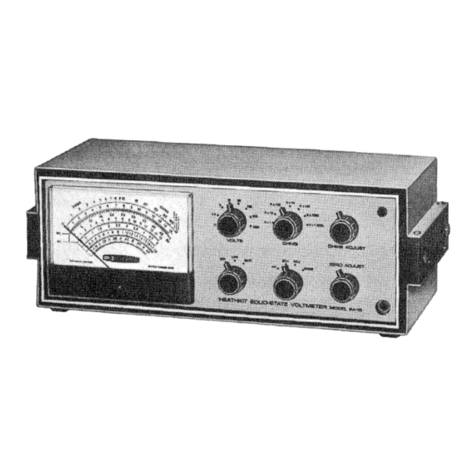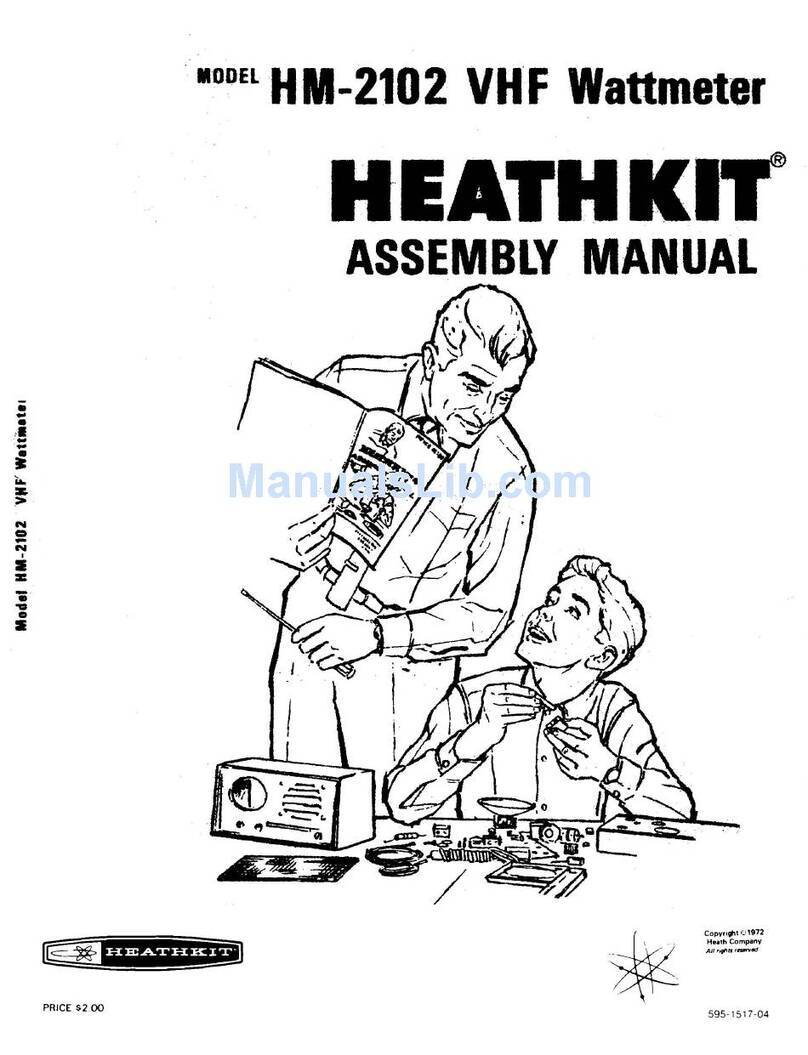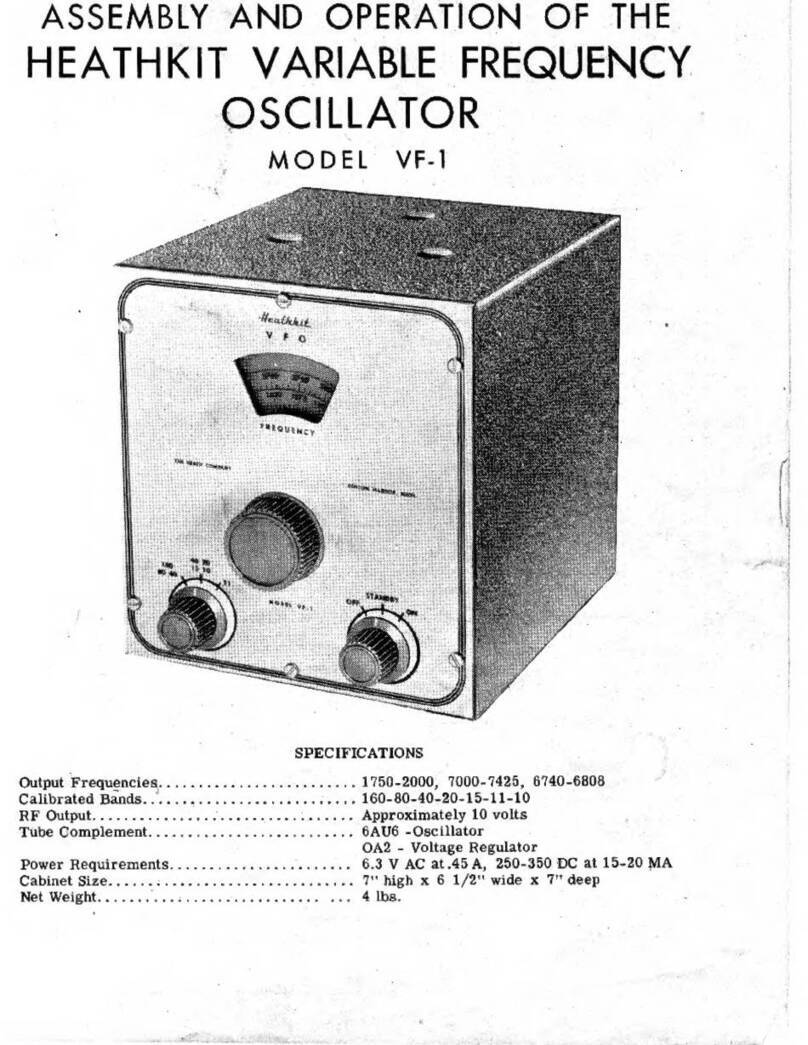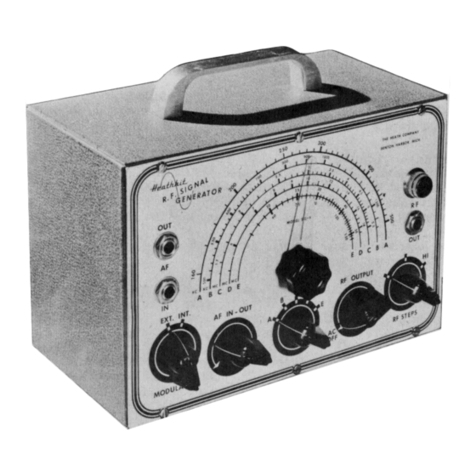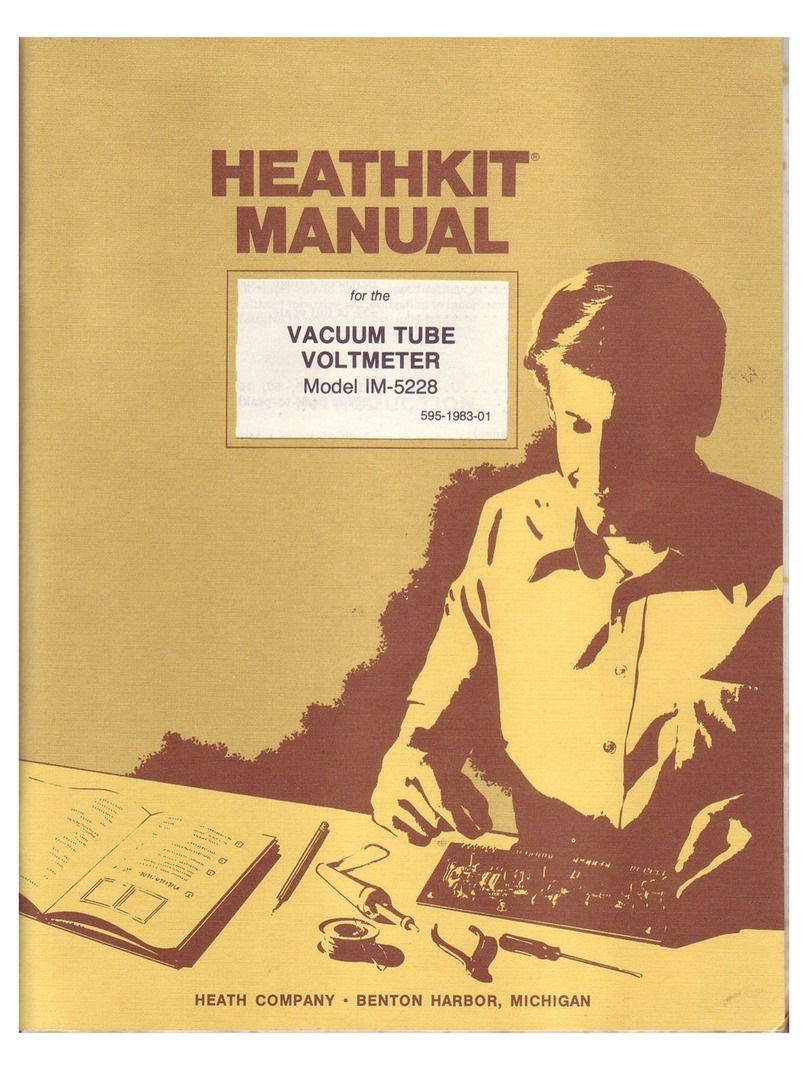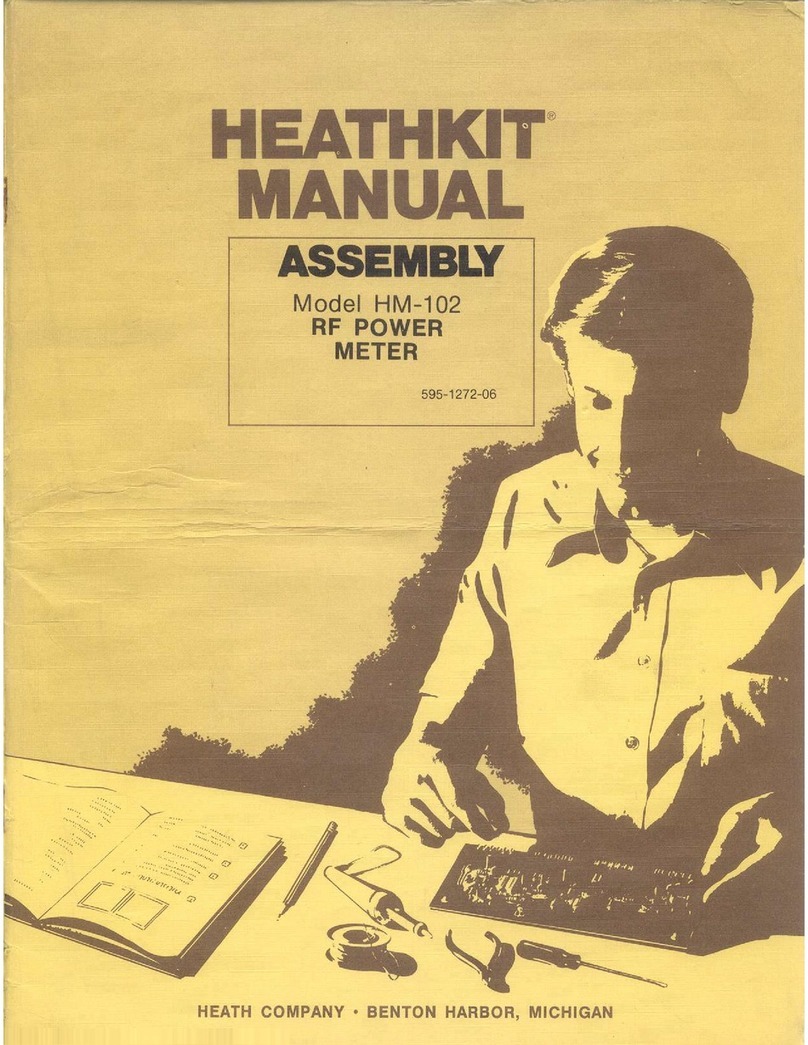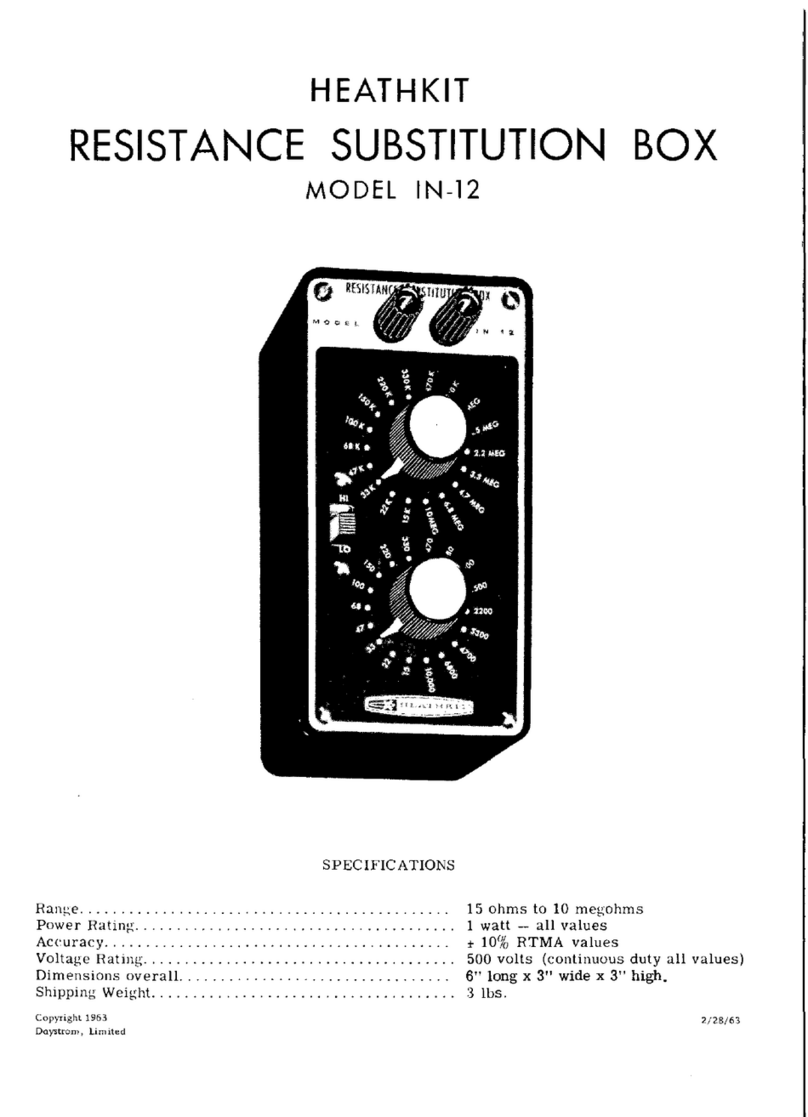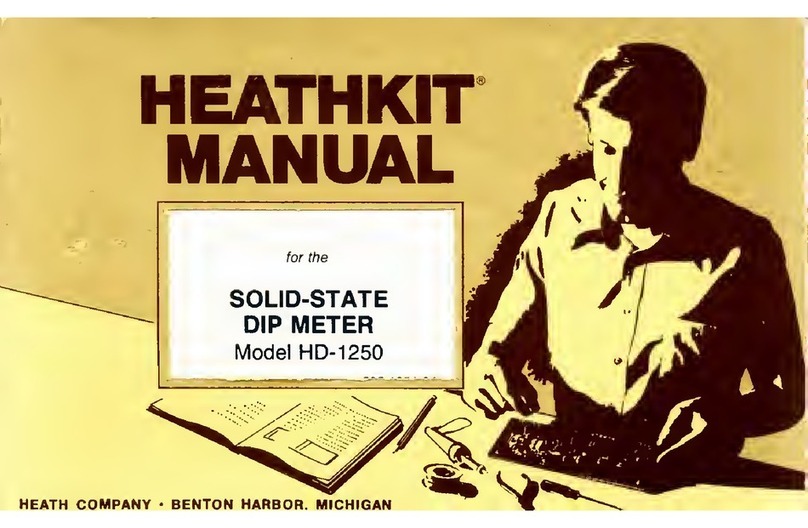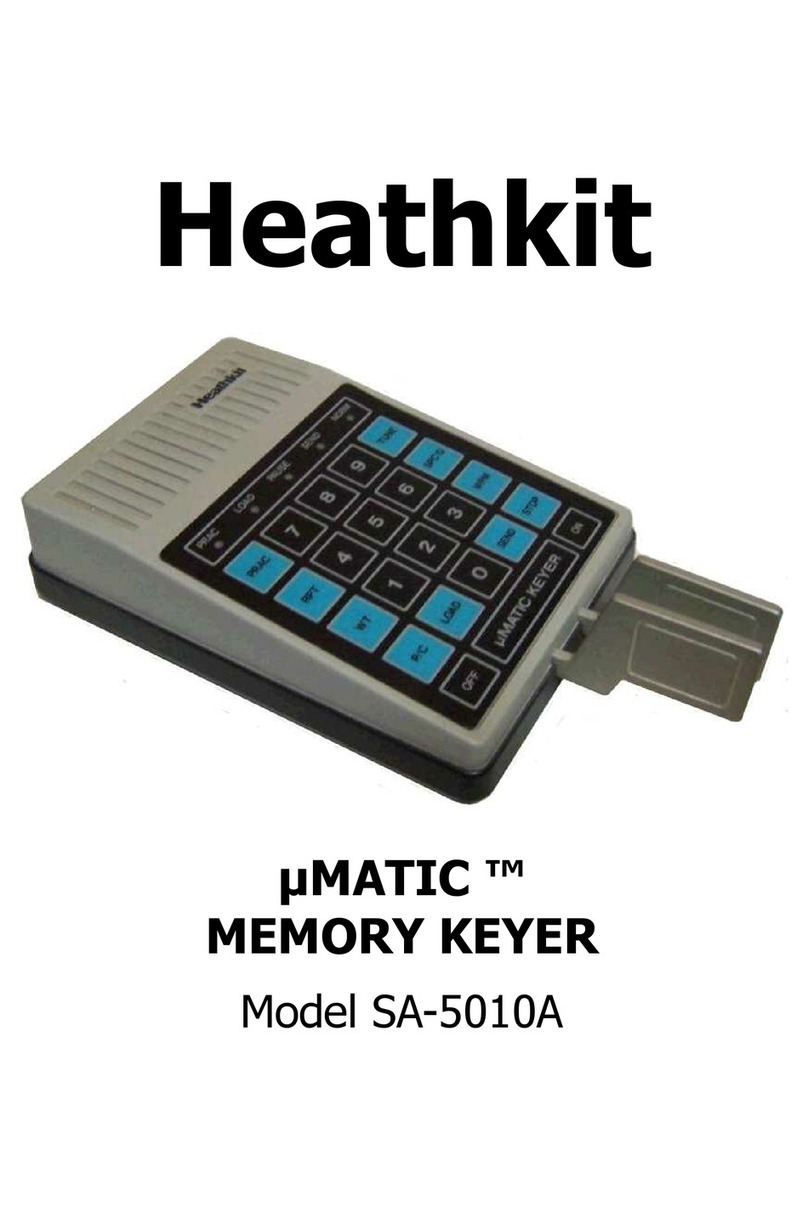Cut transformer leads to length and connect asfollows: One- yellow lead to solder lug (MS) be-
tween tube sockets- Other yellow lead lo pin 1/7 on SH6 socket {MS), One red lead to single
terminal strip (NS). Other red lead to lug on selenium rectifier nearest chassis (S). Abare
wire through pin #1 (3) fr2 (£) t'4 (NS) and tf& INS) on 6HG socket, Abare wire to pin #4 (NS)
on 6116 socket and to solder lug (NS)- Abare wire to pin CMS) on 6SN7 socket and to solder
lug (S). Awire to pin #7 on 0H6 socket (S), and to pin #7 on 6SN7 socket (NS), Awire to lug
on selenium rectifier farthest from chassis (NS) and through pin #5 (S) to pin +2 (NS) on 6SN7
socket,
A,003 condenser (V2<5) to pin #4 on 6H& socket (S),and with spaghetti over the lead to pin #4
on 6SN7 socket (NS). A47OK resistor (013) to pin #8 (S) and pin *6 (NS) on 6H& socket. A
10 meg resistor (CIO) to pin *5 (S) and to pin #3 {NS). A 20K resistor (V22)to single terminal
lug {NS), and to pin If 8on 6SN7 socket (NS). Ameg resistor (O10) to pin f1(S) and pin *&
(NS) on 6SN7 socket. A1SK resistor {V23) to pin #S <S> and to pin #3 {5) on 65N7 socket.
A2K Resistor (G15) to pin A3 on 65N7 socket (ft 5) and with spagetti over the lead to lower ter-
minal of aero adjust Control ($}. Aresistor {015) with spaghetti over both leads to upper
terminal o£ zero adjust control (Si and to pin KG on 6$N7 socket (NS). A47K resistor (A 10)
with spaghetti over both leads to center terminal of zero adjust control (5) and to single ter-
minal strip (NS). A5600 resistor (G12) to inward terminal of DC calibrate control (S), and to
pin #6 on 6SN7 socket (NS). Awire to inward terminal of AC calibrate control (S) and to pin
on 65N7 socket (£}. Awire to center terminal of ohms adjust control (5) and to center ter-
minal of DC calibrate control (NS), A12 MFD condenser (V27) with positive lead to lug on
selenium rectifier farthest from chassis (S) and with negative lead to single terminal strip (S).
Assemble battery bracket as shown and mount on the chassis
with the triple terminal strip and asolder lug under the nut, A
black transformer lead to lower lug {nearest chassis) on ter-
minal strip (NS). Awire to pin #6 on 6HB socket (S) and to out-
side terminal of AC balance control (S). Awire to pin #3 (NS)
on GH& socket and, to middle lug on terminal strip (NS). A.01-
l,00Ov condenser (024) toe enter terminal of AC balance control
(NS) and through solder lug {$) to battery bracket terminal
nearest roar edge of chassis (3). Two 1meg resistors (Ol7)
to center terminal of AC balance control (S), one to middle lug
(S) and other to upper lug (ft 5) on terminal strip. r.".P
On the panel (V 51 C), mount the pilot light assembly (039, O40, 041, 042, 052) with the bracket
toward the slide switch opening. Mount the slide switch (034) with 6-32 screws and nuts.
Mount the banana jacks with speedmits (044), the blackjack (V77B) in the hole marked common
and the red jack (V77R) in the hole marked AC Ohms. Push the banana jack inserts (M28) into
the jacks from, the front of the panel as far as they will go. Mount the phone jack (K17) with
acontrol nut using acontrol Lockwasher between jack and panel and anickel washer between
panel and nut. Mount the range switch (V75) to the panel with acontrol nut, using alockwasher
between switch and panel and anickel washer between panel and nut. Tighten nut partly. Tem-
porarily install apointer knob. Turn switch counterclockwise as far as it will go. Kow turn
the whole switch so the knob points at 3V -Rxl. Carefully remove knob and tighten nut,
...
,)
Q£f~fltL OFBAttAWA JACK. how TO mount catirfiai.5 istvj Tt/tES
Wire the range switch by mounting the multiplier resistors (V103, V73, V74, V6B,, V66, V65,
V71, V7Z and V70) as shown in the pictorials Note that the 30K resistor (V66)
connects to the grounded lug on the phone jack. The 8.3 resistor (VI 03) is soldered to the
switch without shortening the lead, after slipping on apiece of spaghetti. The other side v=
connected later.
Page %
